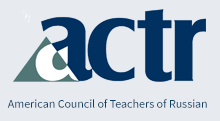Russian Language Journal
Keywords
translation studies, text, language, solution
Abstract
The cluster of three related articles offered here represents what the authors propose to call “translation variance studies,” or TVS, a subfield of translation studies concerned with semantic, pragmatic, and stylistic equivalence and divergence between a single source text and its multiple translations into a specified target language. Multiple translations of a single source text into a single target language have become a widespread phenomenon. Its “ontological basis,” as Anna Muza recently observed, is “variability of solution within the target language.” All parties to translation must of necessity negotiate this variability of solution, beginning with the translator in the act of generating a single target text, a process that consists largely in formulating and assaying multiple solutions for a given segment of the source text and finally selecting an optimal one. The algorithm of selection decisions by which a given translator or school of translation tends to operate could be termed the general poetics of that translator or school. The concerns of TVS are prominent in linguistically rigorous comparative translation criticism, that is, criticism that reconstructs or “reverse engineers” multiple poetics of translation from multiple target texts and assesses their relationship to the linguistics and stylistics of their common source text. Translation variance likewise figures in diachronic studies of the “tradition” of successive translations of given source works, authors, and even entire national literatures into a given target language and its literary tradition. TVS is of direct relevance to instructors of translation and interpreting as well, and has natural interdisciplinary affinities with comparative linguistics, comparative literature, cultural studies, psychology, sociology, communication studies, semiotics, and media studies.
Recommended Citation
Burak, A., & Sergay, T. (2011). Translations, Retranslations, and Multiple Translations: A Case for Translation Variance Studies. Russian Language Journal, 61(1). https://doi.org/10.70163/0036-0252.1092

